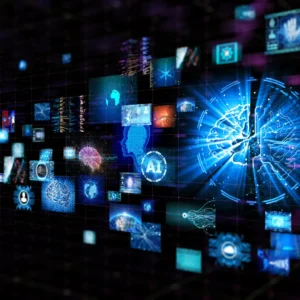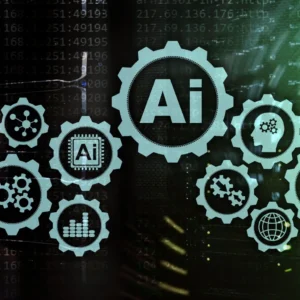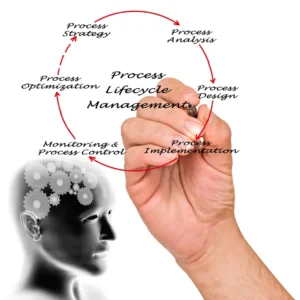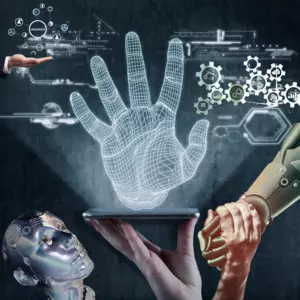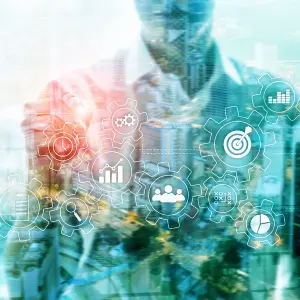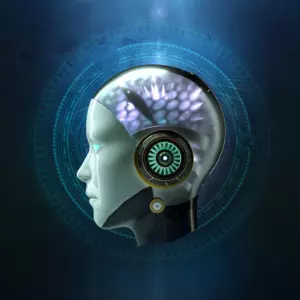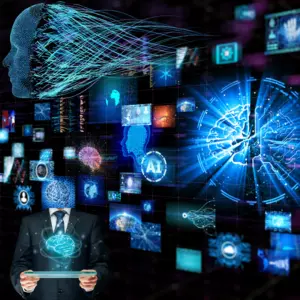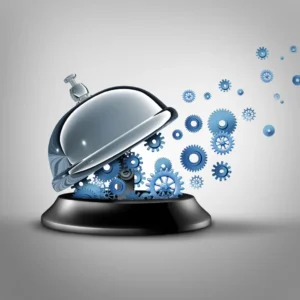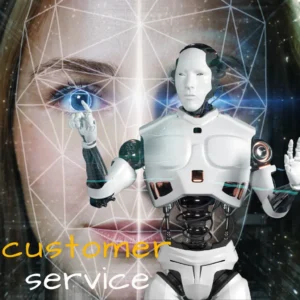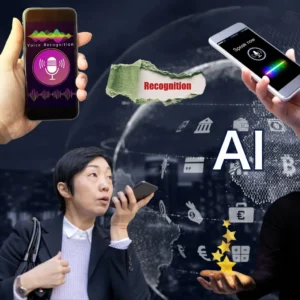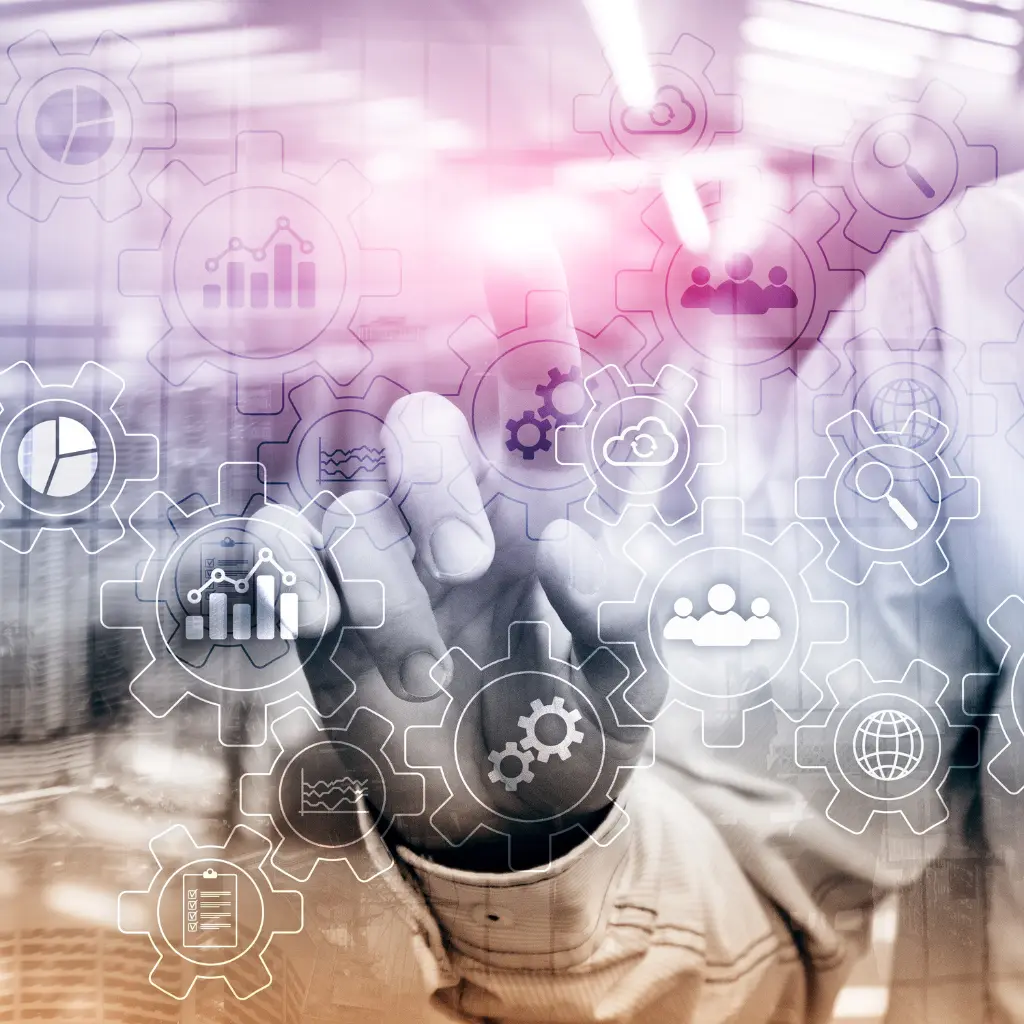
Transformative Tango
Unveiling the Symphony - Evolution of AI in Intelligent Process Automation (IPA)
Welcome to a profound exploration of the Evolution of AI in Intelligent Process Automation (IPA), an evolutionary journey reshaping industries and processes. Over the years, AI has seamlessly woven into the fabric of automation, steering it from rigid rule-based systems to dynamic, intelligent frameworks.
This article delves into critical epochs, starting with the foundational years of traditional automation, progressing through the integration of machine learning and expert systems, and unfolding into the era of intelligent systems.
The 2010s witnessed a pivotal shift as AI and robotics converged, amplifying capabilities in manufacturing and logistics. Autonomous systems at the edge, Industry 4.0, and ongoing trends in the 2020s underscore a commitment to efficiency, ethical AI practices, and collaborative human-AI efforts.
Join us in unravelling the intricate tapestry of the Evolution of AI in IPA, where innovation meets adaptability to shape the future of intelligent automation.
Traditional Automation (Pre-2000s)
In the pre-2000s, industrial-process automation laid its foundation with technologies like programmable logic controllers (PLCs). These rule-based systems formed the backbone of automation, offering efficiency in predefined and static processes.
During this period, automation was essentially rule-driven, executing tasks based on predetermined instructions. Processes, though streamlined, lacked adaptability, operating within rigid frameworks. Programmable logic controllers orchestrated these tasks, ensuring precision and repeatability.
The primary objective was to automate repetitive and rule-bound operations, enhancing productivity in manufacturing and industrial settings. While effective, this approach had limitations, especially in handling dynamic variables or adapting to changing scenarios.
As we delve into the evolution of AI in Intelligent Process Automation (IPA), it’s crucial to recognize the pivotal role played by these early automation systems. They set the stage for integrating more advanced technologies, beginning a transformative journey towards intelligent, adaptive, and data-driven automation solutions. The advent of AI in IPA represents a paradigm shift, unlocking new possibilities and efficiencies beyond the constraints of traditional rule-based automation.
Introduction of Machine Learning (ML) and Expert Systems (2000s)
During the early 2000s, a significant shift occurred in the Evolution of AI in Intelligent Process Automation (IPA). This marked the integration of machine learning (ML) techniques and expert systems into automation frameworks.
Machine learning algorithms became instrumental in optimizing specific tasks within various processes. These algorithms exhibited the ability to learn from historical data, enabling them to make informed predictions and decisions based on identified patterns.
Expert systems, designed to emulate human decision-making, complemented ML by providing advanced rule-based functionalities. Together, these technologies ushered in a more sophisticated era of automation. Processes became smarter, capable of adapting to changing conditions and leveraging insights derived from data.
This integration allowed businesses to move beyond rigid, predefined processes. ML’s adaptability to dynamic data sets and its capacity to evolve with evolving patterns made automation systems more versatile. The focus shifted from static rule-driven operations to intelligent learning systems that could refine their performance over time.
The introduction of ML and expert systems in the 2000s laid the foundation for the current landscape of Intelligent Process Automation, bringing a level of sophistication that paved the way for subsequent advancements in AI integration. This era established a more adaptive, data-centric approach to process automation, transforming industries and optimizing operational efficiency.
Rise of Intelligent Systems (2010s)
In the 2010s, the Evolution of AI in Intelligent Process Automation (IPA) took a notable leap forward. Advancements in algorithms, heightened computing power, and robust data capabilities coalesced to usher in a new era of intelligent systems.
Automation systems embraced sophistication, integrating natural language processing, computer vision, and advanced analytics. These elements empowered systems to comprehend and respond to unstructured data, expanding their versatility across industries.
The rise of intelligent systems marked a shift towards automation solutions that could interpret and act upon nuanced information. Natural language processing facilitated human-like interaction, while computer vision-enabled systems to perceive and understand visual data. Advanced analytics provided insights, enabling data-driven decision-making.
This era laid the groundwork for a more intuitive and adaptive form of automation. Intelligent systems have proven to be indispensable in simplifying complex tasks by being able to process a variety of data types. Incorporating these technologies marked a pivotal chapter in the Evolution of AI in IPA, setting the stage for further advancements in the convergence of artificial intelligence and process automation.
Rise of Intelligent Systems (2010s)
In the 2010s, the Evolution of AI in Intelligent Process Automation (IPA) witnessed a significant leap forward. This era was characterized by the emergence of highly sophisticated algorithms, a surge in computing power, and extensive data capabilities.
These advancements laid the groundwork for developing intelligent systems that surpassed traditional rule-based automation. During this period, automation systems began assimilating advanced elements like natural language processing, computer vision, and cutting-edge analytics.
Natural language processing enabled machines to understand and interpret human language, fostering improved communication between systems and users. Computer vision empowered systems to interpret visual data, bringing a new dimension to automation capabilities. Advanced analytics allowed organizations to extract valuable insights from vast datasets, driving more informed decision-making.
The integration of these elements marked a pivotal shift towards automation systems that could operate more human-like, adapting to unstructured data and enhancing their problem-solving capabilities. This transformative period set the stage for a more intelligent and versatile era in process automation, where systems could execute predefined tasks and comprehend, learn, and optimize based on complex inputs. The rise of intelligent systems in the 2010s laid a solid foundation for the continued evolution of AI in IPA, opening new possibilities for businesses across diverse sectors.
Integration of AI and Robotics (2010s-2020s)
In the 2010s and extending into the 2020s, the Evolution of AI in Intelligent Process Automation (IPA) witnessed a notable stride with the increasing integration of AI with robotics. This integration became commonplace, particularly in sectors like manufacturing and logistics, elevating the capabilities of robotic systems.
AI-driven robotic systems emerged as critical players, showcasing heightened adaptability and learning capabilities. These advancements allowed robots to go beyond predefined tasks and navigate dynamic environments with a level of intelligence. Machine learning algorithms empower robots to learn from experiences and optimize their performance over time.
In manufacturing, AI-driven robotics brought efficiency and precision to production lines. The ability to adapt to task variations and learn from real-time data made these systems invaluable. In logistics, robots equipped with AI seamlessly navigated warehouses, optimizing inventory management and order fulfilment.
This era marked a pivotal shift towards intelligent automation, where robots evolved from rigid, rule-based machines to adaptable learning entities. Integrating AI and robotics enhanced operational efficiency and paved the way for a new era of human-robot collaboration, where both entities complement each other’s strengths. As we explore the Evolution of AI in IPA, the integration of AI and robotics stands out as a transformative chapter, unlocking new possibilities for industries seeking precision and agility in their processes.
Predictive Analytics and Prescriptive AI (2020s)
In the 2020s, the Evolution of AI in Intelligent Process Automation (IPA) took a decisive turn with the integration of advanced analytics. AI applications evolved to incorporate predictive modelling, empowering organizations to foresee and proactively address potential issues.
Predictive analytics became a cornerstone, leveraging historical data and patterns to forecast future trends and outcomes. This capability allowed businesses to anticipate challenges, enabling timely adjustments to strategies and operations.
Furthermore, the adoption of prescriptive AI gained prominence in decision support systems. This approach goes beyond predictions, offering actionable insights by suggesting optimized actions to achieve desired outcomes. Organizations embraced prescriptive analytics to make informed decisions, streamline processes, and enhance efficiency.
The combination of predictive analytics and prescriptive AI marked a paradigm shift in the landscape of intelligent automation. It gave organizations a strategic advantage, enabling them to move from reactive to proactive decision-making. As the Evolution of AI in IPA continues, the integration of predictive and prescriptive analytics stands as a testament to the ongoing transformation, empowering businesses to understand future possibilities and prescribe optimal paths to success.
AI for Complex Decision-Making (2020s-2021s)
In the 2020s and extending into 2021, the Evolution of AI in Intelligent Process Automation (IPA) reached a notable milestone, with AI systems showcasing enhanced capabilities in complex decision-making processes. These systems seamlessly blend data-driven insights with human expertise, creating a synergy that elevates decision-making to unprecedented levels.
Integrating AI in intricate decision processes allows for a comprehensive analysis of vast datasets, extracting valuable patterns and trends. This fusion of machine intelligence and human knowledge brings a nuanced perspective to decision-making, addressing complexities beyond the reach of traditional approaches.
An integral aspect of this evolution is the emphasis on Explainable AI (XAI). XAI recognizes the importance of transparency and trust and makes AI systems understandable and interpretable. It enables technical and non-technical stakeholders to comprehend the rationale behind AI-driven decisions. This transparency fosters trust in AI systems, a critical factor in their widespread adoption.
As organizations increasingly rely on AI for intricate decision-making, the combined power of data-driven insights and human wisdom shapes a future where automation becomes intelligent, ethically sound, and trustworthy. The pursuit of Explainable AI underscores the commitment to responsible AI practices, ensuring that the Evolution of AI in IPA aligns with values of transparency and accountability.
Autonomous Systems and Edge Computing (2020s-2021s)
In the 2020s and extending into 2021, a pivotal shift occurred in the Evolution of AI in Intelligent Process Automation (IPA) with the widespread deployment of AI at the edge. This strategy involves placing AI capabilities closer to where data is generated, fostering efficiency and real-time decision-making.
The convergence of AI and edge computing marked a significant advancement. Organizations improve network performance by processing data closer to the source. This evolution was especially critical in scenarios demanding swift and autonomous decision-making.
Autonomous systems, propelled by AI, gained momentum across various industries. These systems demonstrated a remarkable capacity for adaptability and self-optimization, from manufacturing to healthcare, autonomous processes streamlined operations, enhanced productivity, and reduced dependency on centralized computing.
This shift towards deploying AI at the edge and embracing autonomous systems reflects a pragmatic approach to intelligent automation. It aligns with the need for faster, more responsive systems operating independently in dynamic environments. Regarding the Evolution of AI in IPA, the era of autonomous systems and edge computing is a testament to the commitment to efficiency, adaptability, and decentralized decision-making in intelligent automation.
Holistic AI Integration and Industry 4.0 (the 2020s-2021s)
In the 2020s and into 2021, the Evolution of AI in Intelligent Process Automation (IPA) reached a pinnacle with the emergence of Industry 4.0. This paradigm shift underscored the holistic integration of AI, IoT, cloud computing, and other technologies, fostering comprehensive automation and data-driven decision-making.
At the heart of Industry 4.0 was AI, central in crafting smart factories and interconnected systems across diverse sectors. The integration of AI with the Internet of Things (IoT) facilitated seamless communication between devices, while cloud computing provided scalable and accessible infrastructure for data storage and processing.
This holistic approach to AI integration marked a departure from siloed automation efforts. Instead, it aimed to create interconnected ecosystems where data flows seamlessly across devices and platforms. Smart factories, driven by AI, could adapt to real-time data, optimizing production processes and resource utilization.
As we explore the Evolution of AI in IPA, the Industry 4.0 era stands as a testament to the synergy achieved by combining AI with complementary technologies. It ushered in a new era of automation and laid the foundation for intelligent, interconnected systems that define the future of industrial processes.
Ongoing Trends (2022 and Beyond)
As we step into the future, the Evolution of AI in Intelligent Process Automation (IPA) continues with several ongoing trends poised to shape the landscape.
Continued advancements in AI technologies drive a relentless pursuit of efficiency, scalability, and sustainability. Innovations focus on refining algorithms, enhancing learning capabilities, and optimizing performance across diverse applications.
An imperative in this evolution is the emphasis on responsible AI. Addressing ethical considerations and biases in AI systems is paramount. Ensuring ethical principles guide technological progress makes AI a force for good.
The integration of AI in cybersecurity stands as a critical trend. As automation becomes more pervasive, securing systems against cyber threats is imperative. With its adaptive capabilities, AI fortifies cybersecurity measures, providing robust protection for automated systems.
A defining aspect of the ongoing Evolution of AI in IPA is the collaboration between humans and AI. This symbiotic relationship leverages the strengths of both, fostering enhanced productivity. Human-AI collaboration becomes a cornerstone, with AI augmenting human capabilities and vice versa, creating a powerful alliance for the future of work.
In the years ahead, these trends collectively steer the Evolution of AI in IPA towards a future where intelligent automation is efficient but also ethical, secure, and synergistic with human endeavours.
Conclusion
In conclusion, the Evolution of AI in Intelligent Process Automation (IPA) is a remarkable journey marked by transformative milestones. AI has reshaped how processes are conceived and executed, from the rule-driven systems of traditional automation to the integration of advanced analytics. The 2000s witnessed machine learning and expert systems fusion, laying the foundation for today’s sophisticated intelligence.
The 2010s ushered in intelligent systems, incorporating natural language processing and computer vision. The subsequent decade brought autonomous systems to the edge, emphasizing decentralized decision-making. The advent of Industry 4.0 solidified a holistic approach, intertwining AI with IoT and cloud computing for interconnected, data-driven ecosystems.
Ongoing trends emphasize the relentless pursuit of efficiency, responsible AI practices, robust cybersecurity, and collaborative efforts between humans and AI. This future envisions a harmonious synergy, where AI not only optimizes processes but also aligns with ethical principles and fortifies the security of automated systems.
The Evolution of AI in IPA reflects technological advancement and a commitment to creating intelligent, adaptive, and responsible solutions that propel industries into a future where automation is synonymous with efficiency, ethics, and collaborative innovation.
Related Articles
- Choosing the Right Automation Tool in 7 Steps
- A 9-Step Guide to IPA Implementation: Energise Your Operations
- Navigating the Roadblocks of IPA – The Top 9 Challenges
- AI in Intelligent Process Automation – Unleash the Power of AI
- 9 IPA Examples in Small-Scale Industries
- Power of Intelligent Business Process Automation – Efficiency
- AI Business Process Management: Unleashing the Power
- Business Process Management with AI Integration
- AI for Reengineering Business Processes
- Hyperautomation: Redefining BPM with AI
- The Role of AI in Business Process Modelling
- AI-driven Customer Onboarding – Unleash the Power of AI
- Effective Process mapping in Intelligent Process Automation
- Intelligent Process Automation Adoption – The Best Strategy Guide
- TechInfra in IPA: A Comprehensive Guide
- Elevating Intelligent Automation with Continuous Improvement
- Comprehensive Approach to Cost-Benefit Analysis in IPA
- Vendor Selection in IPA – Comprehensive Guide
- Implementing Agile in Intelligent Process Automation (IPA)
- Scalability and Integration in Intelligent Process Automation
- Cognitive Automation in IPA: Innovating Ethical Efficiency
- Mastering Symphony: Bot Development in IPA Unveiled
- UI/UX Mastery in IPA: Elevating Automation Experiences
- Compliance and Security in IPA – A Guide Ensuring Trust
- Impact of Performance Monitoring and Analytics in IPA
- Driving Success: Data Management in IPA
- Crucial Role: Documentation in IPA Triumph
- Optimizing IPA – Continuous Improvement Strategies




